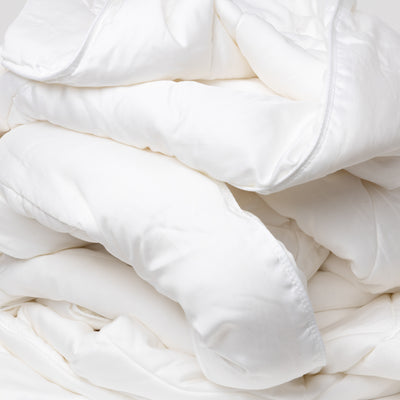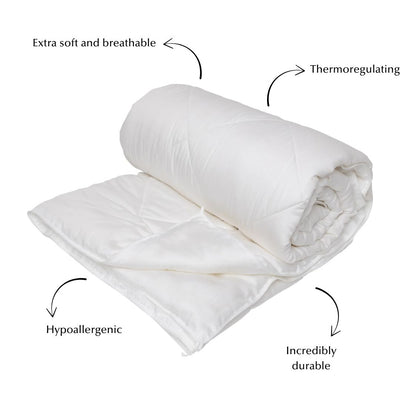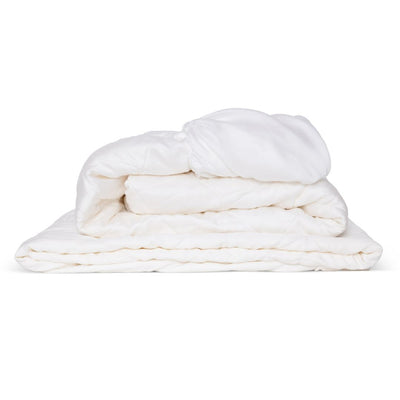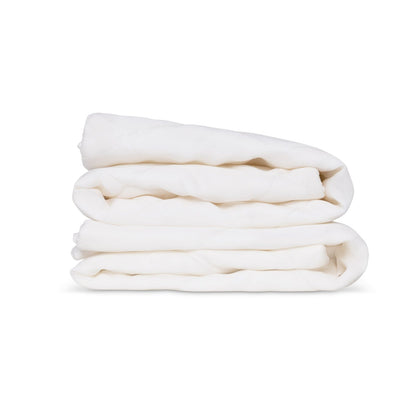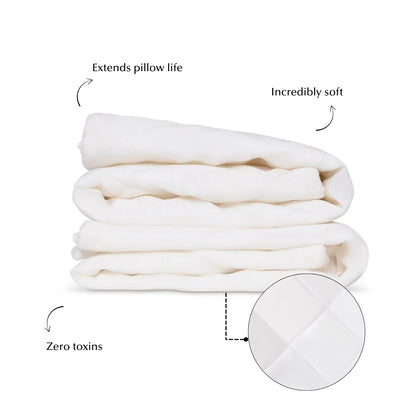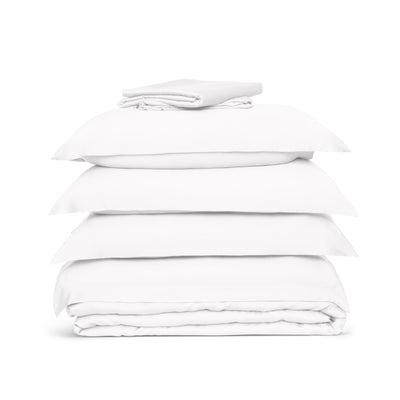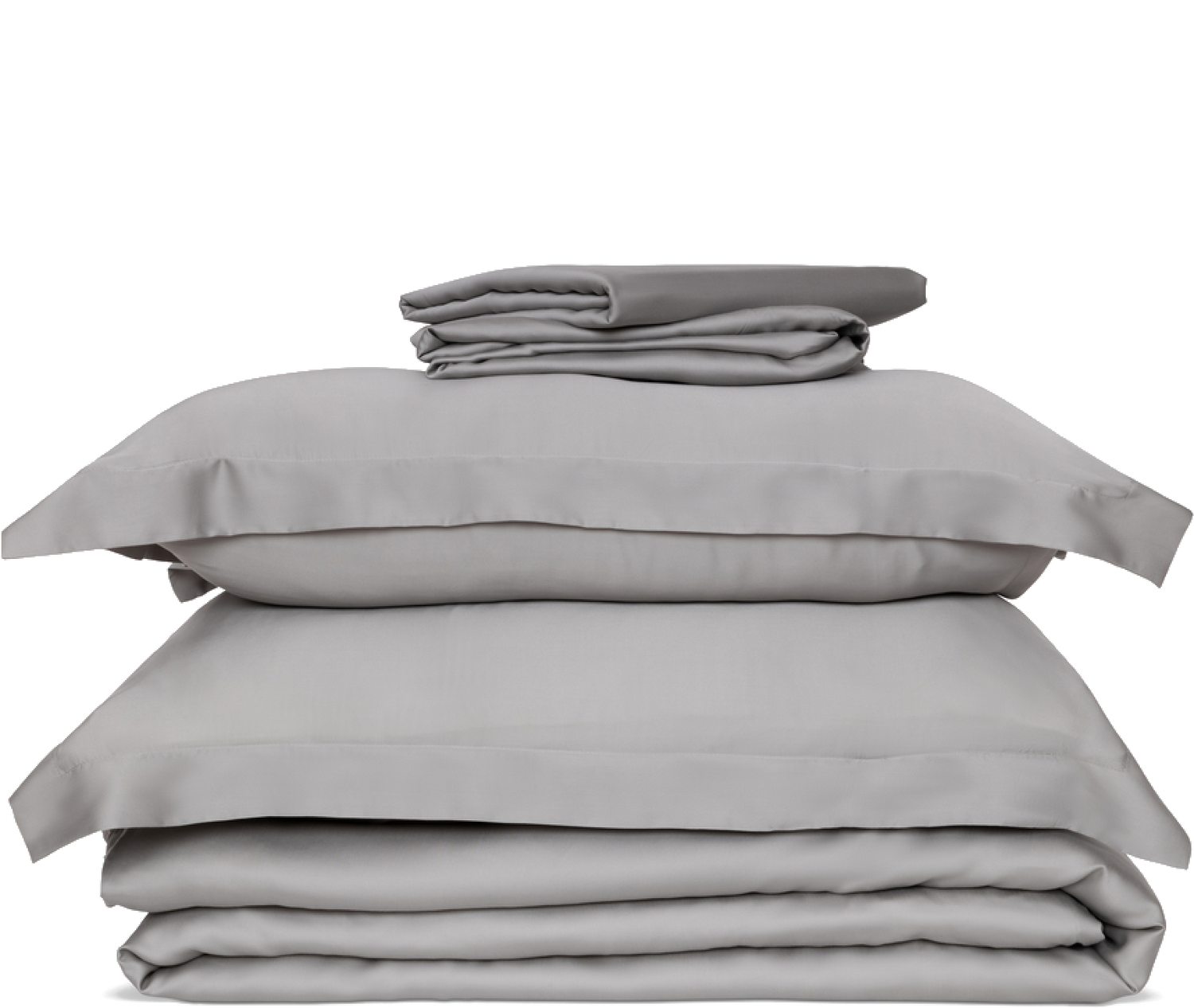The year is 2021, and we are in crisis. Our growing population and unsustainable practices have led to a rise in the rate of climate change, and the consequences are reverberating all over the world.
In a nutshell, we are consuming too much. We have too much trash, and our landfills are struggling. However, all is not lost. Some of us are trying to reverse, or at least slow, the damage we are doing to our environment.
More individuals and companies than ever are trying to reduce their carbon footprint and aim towards zero waste in recent years.
What Is Zero Waste?
The primary purpose of a zero waste lifestyle is to minimize consumption and reduce our overall contribution to landfills. While near impossible to achieve, an overall reduction will still benefit our environment, reduce our carbon footprint, and as a bonus, save money!
It can start as simply as recycling and reusing as much as possible before purchasing new or single-use products. The important thing to realize is that a commitment to a zero waste lifestyle is not merely achieving the desired outcome but a journey towards the end game.
Unlearning unnecessary consumption can be challenging. We’ve put together this guide not to instruct anyone or impose our opinions but rather to provide suggestions to those interested in reducing their impact on our environment.
Zero waste doesn’t happen overnight, but by taking baby steps, we can all start somewhere. The five “R’s” of waste management are Refuse, Reduce, Recycle, Reuse, and Rot. By simply keeping these principles, you’ll be able to take small steps to minimize your carbon footprint and contribute to the zero waste movement.
Here’s a handy list of minor tweaks that you can make to embrace a more zero-waste home.
Tips To Move Towards Zero Waste
Recycle
- Recycle whenever possible by separating your trash into plastic, paper, glass, metals, and whatever your local recycling center will take. A whopping 22% of Americans surveyed said they don’t have enough recycling information and facilities, while 18% admit they don’t understand what can or cannot be recycled.
Improper recycling practices can also contaminate materials and make them unsuitable for recycling. For example, a plastic bag or container filled with food waste might end up in a landfill instead of being recycled.
If you work in an office, make sure recycling bins are readily available and labelled appropriately. Sometimes, all it takes to encourage others to do the same is to make things convenient.
Recyclable Waste
All glass is 100% recyclable and can be reused an infinite number of times without loss in quality. A glass bottle takes 4,000 years or more to biodegrade, even more, if it ends up in a landfill. More than 28 billion glass bottles end up in landfills each year.
Approximately 100 billion cardboard boxes are produced in the US each year. One ton of recycled cardboard saves 46 gallons of oil, while recycling a cardboard box takes 75% of the energy compared to producing a new one.
Recycling one ton of plastic saves 1,000 to 2,000 gallons of gasoline, and Styrofoam never decomposes.
Americans use about 680 pounds of paper per person per year, contributing to 70% of office waste. Approximately 1 billion trees worth of paper is thrown away in the US each year. Recycling one ton of paper saves 7,000 gallons of water!
Aluminium cans are recycled at only 5% of the energy cost of making new products. They can be recycled and back on the shelves within 60 days without any degradation of quality.
Recycling Cost
On average, it costs $30 to recycle waste, $50 to send it to landfills, and $65 to incinerate it. All signs point to recycling!
-
Bring a tote for your shopping. The versatile tote bag is an essential part of anyone’s bag collection and will be your favourite companion for trips to the grocery store. It cuts the need for paper or plastic bags and might even save you money now that stores across the United States and Canada have started charging for plastic bags.
Use Vegan Products
Plastic is one of the ocean’s most significant polluters and is responsible for more than 100,000 deaths of marine animals. In addition, plastic takes between 15 and 1,000 years to break down, and so living plastic free is of great importance for our future.
- Move towards a plant-based diet and reduce meat consumption. The animal agriculture industry is the second-largest polluter after the oil and gas industry and is responsible for 16% of carbon emissions worldwide.
In addition, it takes an enormous amount of grain and water to sustain the livestock that we consume. A plant-based diet is healthier, kinder to animals, and supports the overall reduction in the environmental impact of the food industry.
-
Not everyone wants to adopt a plant-based diet. We understand. Carnivores can still make tweaks to supporting a plant-based lifestyle by looking into vegan clothing. These products avoid the use of animal products like leather, fur, silk, and wool. The leather industry uses harmful chemicals in the tanning process which goes into the waterways and soil.
The Centers For Disease Control and Prevention (CDC) found that those living near tanneries were more likely to contract cancers, leukemia, and other serious illnesses. Avoiding the use of animal products in clothing, accessories, and apparel will help reduce the footprint of the fashion industry. Not to mention you’ll make millions of minks and foxes thankful. Or they might just not exist!
Vegan products are kinder to our animal friends and an excellent way for carnivores to support a plant-based lifestyle.
- Shop responsibly and only buy what is needed. Check with local communities and thrift stores to see if what you’re looking for can be someone else’s trash. Not only will it keep many products from hitting the landfills, but your wallet will also thank you.
Carefully monitor what you are spending on and make calculated decisions on what you purchase. Is it necessary? Are there second-hand alternatives? Is it single-use or be able to be used for a while? More conscious buying decisions will result in a happier, more minimal lifestyle.
-
Buy eco-friendly whenever possible. From recycled packaging to household items like mattresses and bedding, eco-friendly products typically contain fewer chemicals, making them a healthier overall choice. In addition, these products are manufactured in a less wasteful supply chain.

-
Buy fresh food and produce instead of processed food. Not only will your body thank you for it, but it also cuts down on unnecessary packaging. Don’t forget to bring the tote!
- Cut down or better yet, eliminate single-use. Plastic utensils, straws, paper towels, and plastic take-out containers are all examples of waste that can be reduced. Bring your own containers or items if you are heading to businesses that still use single-use items.
- Have a water bottle handy at all times to avoid buying bottled water. Make your favourite bottle as essential to you as your keys, wallet, and phone. Don’t leave home without it!
There are many BPA-free water bottles in the market. Bisphenol A is a potentially harmful compound found in epoxy and resin products. It has been linked to increased blood pressure, cardiovascular disease, and type 2 diabetes.
Recycling plastic takes 88% less energy than making it from raw materials. Only 23% of plastic bottles go to recycle bins, while 2.5 million plastic bottles are thrown away every hour in the US.
- Mind the trash! Before throwing out anything, see if you can re-purpose them for anything around the house. Plastic bottles make excellent planters, while plastic bags or boxes can help organize your stuff. Glass bottles that food comes in make ideal airtight containers and food organizers.
Frequently check your trash bin to audit your trash. While seemingly unpleasant, it’ll give you a good idea of where most of the waste is coming from. Most things can have a second chance in life; get creative with the use of trash!
- When possible, try topping up the containers of cleaning products like shower gel and laundry detergent with liquid mixture instead of buying new containers. Not only will it save money as top-ups cost less than bottled products, but it’ll also save on a bunch of plastic that you won’t need.
-
When buying clothes or bedding, choose sustainable fabrics like hemp, bamboo, or Tencel. These fabrics come from fast-growing plants and trees harvested sustainably according to guidelines from the FSC (Forest Stewardship Council).
Cotton is the most popular fabric in the world yet one of the most significant polluters. In addition, cotton farming requires so many pesticides and insecticides that the World Health Organization has found that communities near farms are at greater risk of severe diseases.
- Donate unwanted items in good condition instead of throwing them out. Thrift stores and shelters will be happy with your leftovers, and they’ll keep them out of landfills.
- Opt for paperless bills wherever possible. E-statements for bank statements, receipts, and utility bills are an excellent way to reduce paper consumption. Most businesses will appreciate going paperless; it saves them money too!
- Check with libraries for your favourite books before buying. Donate any old books you might want to throw out to your local library or thrift store. Kindles or any other reading apparatus might also suit the lifestyle of voracious readers and travellers.
- Shop local whenever possible. Supermarkets often have imported products that are flown or shipped from distant locations, consuming unnecessary energy. Supporting your local farmer’s market or greengrocer will not only put money back into your community but also helps the little guys.
- Compost whenever possible. You’ll get better, more nutrient-rich soil with valuable microorganisms. By reducing the amount of trash, you’ll save on trash bags and keep more food out of landfills.
Food in landfills takes longer to decompose, and the nutrients released into the soil are wasted. Composting is free and cuts down on the use of factory-made fertilizers and chemicals.
- Buy in bulk whenever possible. Bring your own bags for the bulk food section of the local grocery store or buy larger portions of food. You can always portion them out once you get home for storage. Small quantities accumulate unnecessary packaging and contribute to overall waste.
- Try repairing before tossing. Some things that are broken might be an easy fix and can be saved from landfills. Even if fixing is beyond your skills, give them away to thrift stores or within your local community might find some handy people giving your stuff a second life.
- Bring your own containers and coffee mugs when ordering takeout food and drinks. You can cut down on takeout containers and paper cups quickly. It just takes a little effort to pop a box or two in your bag, and you’ll have it on hand for anything you order that requires plastic or paper packaging.
- Replace dryer sheets with dryer balls. They soak up 25% more water, reducing the time and energy needed to dry your clothes. Better yet, think about drying your clothes on an outdoor clothesline, eliminating the need for dryers. The bonus is that you’ll save on electricity bills!
- Pay attention to the materials of everything you buy. Wood will compost, while stainless steel and glass can be recycled. Choose recyclable plastic instead of single-use, or better yet, try cutting down on the number of plastic items in the house.
- Rechargeable batteries cost way less than regular batteries. It takes 1,000 standard batteries to equal the lifespan of a single rechargeable.
Batteries can leak heavy metals such as cadmium, lithium, and nickel. If improperly disposed of, they can contaminate waterways and soils. If incinerated, they release these metals into the atmosphere.
- Plan your meals and try reducing food waste. According to the EPA, the US wastes 30% to 40% of all food produced, equaling 34 million tons. They go straight to landfills, incineration, or are simply left in fields to rot. Only about 5% of food waste is diverted from landfills.
Food that ends up in landfills releases methane gas as they decompose, a greenhouse gas that is 28 times more potent than carbon dioxide. The resources and energy used to manufacture and package the food end up completely wasted.
- Refuse free product samples from companies or even gifts that you don’t need. Free products tend to be of low quality and will not last. Presents can be sent back or exchanged for something you actually need.
- Make reusable a part of your backpack. A good start would be a grocery tote, a bamboo straw, a container for food, utensils, and a water bottle. That way, you’re prepared for circumstances that will allow you to refuse to take single-use stuff you don’t need.
Pay attention to the businesses that you like to patronize. How can you help reduce their consumption? Companies like it when we bring our own stuff. After all, it helps them save money!
- Choose items like medication or food from glass jars instead of wrapped in aluminium or plastic. Glass can be recycled infinitely with no loss in quality, and glass jars are a great storage option for anything else in the house.
Mason jars are a fantastic way of keeping everything organized. Any glass jar that your food comes in can be washed and reused for many years.
- Unplug your electronics when not in use to cut down on electrical consumption. Not only will you use less energy, but you’ll also save on bills!
- Follow in the footsteps of the older generations and carry handkerchiefs! Not only are they washable and reusable, but they will also cut down on the number of tissue papers or napkins you use.
Use washable cloths at the dinner table and try to limit the usage of disposable napkins, kitchen towels, and tissue paper.
- Try avoiding or reducing the consumption of palm oil. Palm oil is in EVERYTHING! It is in food, cosmetics, cleaning products, pet food, packaging, everything.
Palm oil is an edible oil that comes from palm fruit. The palm oil industry is one of the major contributors to deforestation, animal cruelty, and climate change.
300 football fields worth of forests are cleared every single hour to make way for palm oil production. Deforestation caused by palm plantations is pushing endangered species like orang-utans and tigers to extinction.
- Swap out plastic cling wrap with reusable silicone covers. A bowl can just as easily be covered with a plate instead of cling wrapped.
- Replace some commercial cleaning solutions for DIY solutions. Most store-bought cleaners contain harmful chemicals and petroleum, sending them into the drains and polluting the surrounding environment.
By making your own cleaning products, not only will you cut down the packaging and chemicals associated, but you will also make your home safer and less toxic.
VOCs
Most commercial cleaners have VOCs (Volatile Organic Compounds). VOCs are compounds emitted from several sources, such as cleaning products, paints, and other household items. They are toxic chemicals that have been linked to health problems such as liver and kidney damage, headaches, nausea, and eye, nose, and throat irritation.
You can make natural cleaning solutions from baking soda, vinegar, and lemon juice. Bleach can be made with lemon, castile soap, and hydrogen peroxide.
- Switch out synthetic dish scrubs with reusable silicone scrubs or compostable materials such as bamboo. Even toothbrushes are now available in bamboo, eliminating the need for plastic brushes.
Use Bamboo Products
Bamboo is a fast-growing crop that is hardy and grows with hardly any pesticides or fertilizers. It requires minimal water and self-regenerates, even in rocky, shallow soil and other harsh environments. With a tensile strength of 28,000 pounds per square inch, bamboo is also stronger than steel and lasts many years.
The bamboo plant emits 35% more oxygen than other trees of equal mass. It also absorbs 12 tons of carbon dioxide per hectare per year. In addition, their unique root system benefits the soil in which they grow.
Bamboo products can be found everywhere. We can significantly cut down on our waste by switching non-biodegradable plastic products with bamboo or other biodegradable alternatives.
- Fight junk mail. Millions of tons of greenhouse gases and countless trees go into producing material that rarely even gets opened. Some patience is required when removing yourself from mailing lists!
Go Paperless!
You can register for a “do not mail” list, use an app like Paperkarma, or contact the organizations that frequently bomb your mailbox and politely request to be taken off the list to improve your zero waste living.
Stick a note on your mailbox or have a sign that says “no junk mail please”, which is a temporary fix but just might be enough to convince your mailman.
- Join a local or online community of like-minded people. You are not alone. The zero waste movement is rapidly gaining traction, and there is already a big community of individuals concerned about environmental and social issues.
Online groups on Facebook and other social media are great to swap ideas and read what others are up to. They give more insight into the challenges that others face and can prove to be a worthy ally in your journey towards zero waste.
You can also start a community in your local area and set up a grassroots movement. Approach grocery stores and convince them to go bag-free, or create a campaign like “straw-free”. The more people request sustainable practices, the more businesses will start to listen and cater to the demands of their customers.
Conclusion
Eco-anxiety is very real and refers to the persistent worry about the future of our planet and the consequences of climate change. Don’t be frustrated if your journey to zero waste isn’t going as planned.
Change takes time, and you’ll need to be kind and forgive yourself for slip-ups. A big community of like-minded individuals is out there waiting to swap ideas with you and support each other. Positivity is infectious!
We all know how important it is to reduce our environmental impact. This rate of consumption is simply unsustainable. We thank you for starting the journey towards zero waste and wish you the very best of luck!

